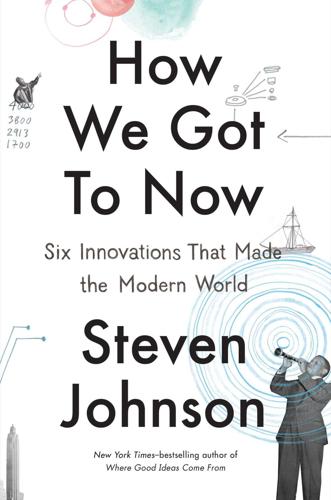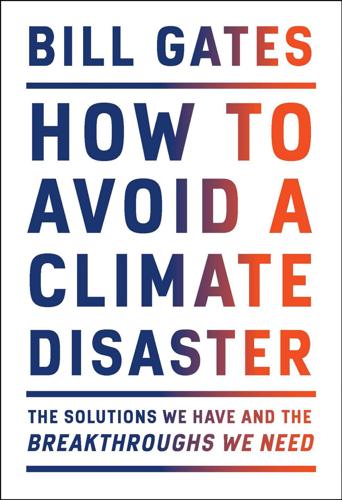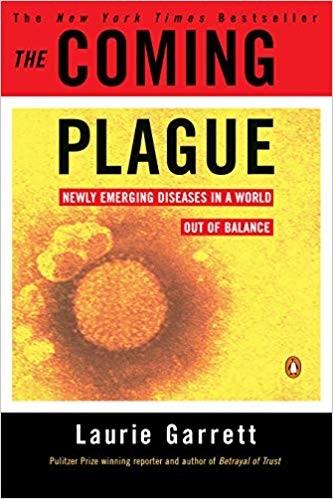
How We Got to Now: Six Innovations That Made the Modern World
by
Steven Johnson
Published 28 Sep 2014
Sometimes, as in the story of Gutenberg and the lens, a new innovation creates a liability or weakness in our natural toolkit, that sets us out in a new direction, generating new tools to fix a “problem” that was itself a kind of invention. Sometimes new tools reduce natural barriers and limits to human growth, the way the invention of air-conditioning enabled humans to colonize the hotspots of the planet at a scale that would have startled our ancestors just three generations ago. Sometimes the new tools influence us metaphorically, as in the robot historian’s connection between the clock and the mechanistic view of early physics, the universe imagined as a system of “cogs and wheels.”

Right of Way: Race, Class, and the Silent Epidemic of Pedestrian Deaths in America
by
Angie Schmitt
Published 26 Aug 2020
These precar neighborhoods have narrower streets than newer cities and buildings that are oriented toward them. As a result, they are inherently safer for pedestrians. That is not the case for cities like Fort Myers, Florida, and many of the other cities topping Smart Growth America’s list. A good rule of thumb is that if a city or state developed after the invention of air conditioning, it is likely to be a dangerous place to walk. Texas and Georgia, for example, have more than twice as many per capita pedestrian fatalities as Massachusetts, even though people walk at much higher rates in Boston than in Houston.40 “In most of these states, their built environments were constructed with Eisenhower’s Interstate Highways System as the model,” said Atherton of the National Complete Streets Coalition.41 Geoff Boeing, professor of urban planning at the University of Southern California, analyzed the street networks across the United States and found different patterns based on the “era” an area was developed.42 Boeing found that places that developed prior to 1940—central Philadelphia, Pittsburgh, Brooklyn, and the central cores of small towns and big cities alike across the country—have a high level of what Boeing calls “griddedness.”

How to Avoid a Climate Disaster: The Solutions We Have and the Breakthroughs We Need
by
Bill Gates
Published 16 Feb 2021
Chapter 8: How We Keep Cool and Stay Warm Humans have been trying: A. A’zami, “Badgir in Traditional Iranian Architecture,” Passive and Low Energy Cooling for the Built Environment conference, Santorini, Greece, May 2005. But the first known machine: U.S. Department of Energy, “History of Air Conditioning,” www.energy.gov. Also “The Invention of Air Conditioning,” Panama City Living, March 13, 2014, www.panamacityliving.com. Barely more than a century: International Energy Agency, “The Future of Cooling,” www.iea.org. Worldwide, there are 1.6 billion: International Energy Agency, www.iea.org. Figure: A/C is on the way: Based on IEA data from IEA (2018), The Future of Cooling, IEA (2018), www.iea.org/statistics.

Supertall: How the World's Tallest Buildings Are Reshaping Our Cities and Our Lives
by
Stefan Al
Published 11 Apr 2022
Using the condensation from the world’s tallest glass tower’s air-conditioning system to irrigate the desert only gets us so far. We need a new design paradigm for skyscrapers that goes beyond crystal palaces. IN CONTRAST TO THE EVOLUTION of air-conditioned behemoths, a small strand of modern architecture advocated for buildings easier on the environment. About two decades after the invention of air-conditioning, in Germany between the wars, architects began designing energy-efficient buildings. Their motivation stemmed from a concern not with cooling but with heating. Germany had lost access to many coal mines when Allied forces occupied the Ruhr. This meant that architects could not rely on mechanical heating.

Wonderland: How Play Made the Modern World
by
Steven Johnson
Published 15 Nov 2016
But as mall culture went global, Gruen’s design became increasingly prominent in the downtown centers of new megacities. Originally conceived as a way to escape the harsh winters of Minnesota, Gruen’s enclosed public space accelerated the mass migration to desert or tropical climates made possible by the invention of air-conditioning. Today, the ten largest shopping malls in the world are all located in non-U.S. or European countries with tropical or desert climates, such as China, the Philippines, Iran, and Thailand. And while the mall itself would expand in scale prodigiously—a mall in Dubai has more than one thousand stores spread out over more than five million square feet of real estate—the basic template of Gruen’s design would remain constant: two to three floors of shops surrounding an enclosed courtyard, connected by escalators.

What Technology Wants
by
Kevin Kelly
Published 14 Jul 2010
Technological systems gain their own momentum and become so complex and self-aggregating that they form a reciprocal environment for other technologies. The infrastructure built to support the gasoline automobile is so extensive that after a century of expansion it now affects technologies outside of transportation. For instance, the invention of air-conditioning in concert with the highway system encouraged subtropical suburbs. The invention of cheap refrigerated air altered the landscape of the American South and South-west. If air-conditioning had been implemented in a nonauto society, its pattern of consequences would have been different, even though air-cooling systems contain their own technological momentum and inherencies.

The Rise and Fall of American Growth: The U.S. Standard of Living Since the Civil War (The Princeton Economic History of the Western World)
by
Robert J. Gordon
Published 12 Jan 2016
In the coal mining industry, the annual fatality rate per 100,000 miners dropped from 329 during 1911–1915 to twenty-five during 1996–1997.3 The reduction in injuries and fatalities across mining and manufacturing lifted the scourge of income loss and disability for thousands of households. Figure 15–1. Percentage of Employed Civilian Labor Force in Agricultural and Non-Agricultural Work, 1940–2012 Source: Table B-35, Department of Labor (Bureau of Labor Statistics), ratio linked back from 1940 to 1947. Just as the invention of air conditioning facilitated the flight of retirees to sunny southern destinations, so it also benefited the productivity, not to mention the comfort, of clerical and other white-collar workers. Productivity was estimated to have been raised by 25 percent among government typists during the 1950s as a result of air-conditioning, and it was rated as the chief boost to worker productivity by 90 percent of American firms in a 1957 survey.

The Coming Plague: Newly Emerging Diseases in a World Out of Balance
by
Laurie Garrett
Published 31 Oct 1994
Air-conditioning standards changed after 1976, with federal agencies all over the world requiring far more stringent cleaning and hygiene provisions for cooling towers and large-scale air-conditioning systems. In the case of Legionella, a new human disease had emerged in 1976, brought from ancient obscurity by the modern invention of air conditioning. At the CDC’s International Legionnaires’ Disease meeting in 1978, several particularly ominous facets of the bug were scrutinized. CDC scientists revealed that the organism could be found in tap water, shower nozzles, and other allegedly clean water sources. One tap water study showed Legionella could survive over a year inside pipe biofilms, emerging in wholly infectious form once the faucet was turned on full force.